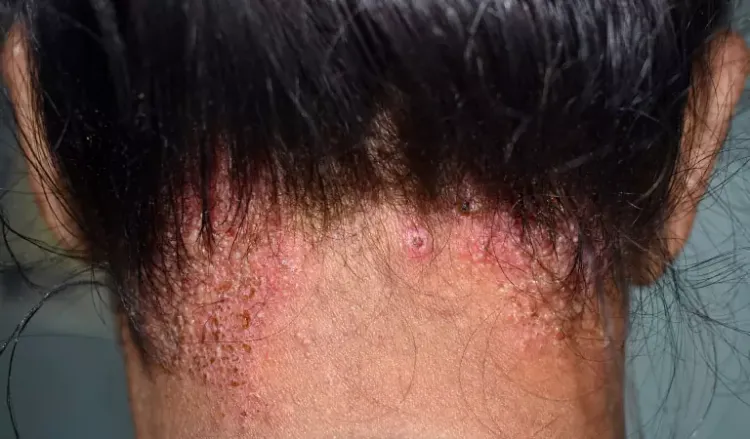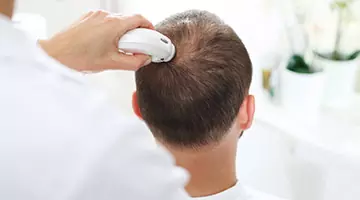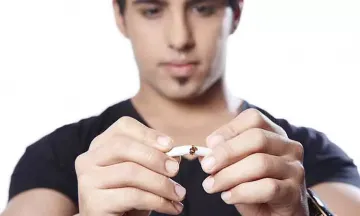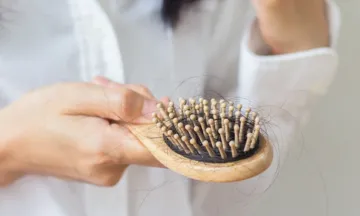All You Need To Know About Seborrhoeic Dermatitis
Does your scalp perpetually feel itchy? And do you notice patches of flaky skin on your scalp or other parts of your body? This might be the result of a condition called seborrhoeic dermatitis or seborrhoeic eczema. Many people are likely to be more familiar with its layman term - dandruff. Seborrhoeic dermatitis is a severe form of dandruff. People with seborrhoeic dermatitis can develop a thick yellowish greasy scale throughout the scalp. What may come as a surprise is that these flakes are not exclusive to your scalp. It can even cause scaling around the nose, eyebrows and the ears.
Seborrhoeic dermatitis is a common skin condition that causes skin inflammation. For people with seborrhoeic dermatitis on the scalp, it can be immensely distressing as there is itching and visible scaling, which can cause social embarrassment.
What Causes Seborrhoeic Dermatitis?
Seborrhoeic dermatitis is caused by the abundant overgrowth of common yeast– malassezia and rapid shedding of cells. Other factors include the weather, stress, genetic disposition and; this condition is not caused by allergies or poor hygiene. Don’t worry, seborrhoeic dermatitis is not infectious. Also, malassezia yeast is common and people with seborrhoeic dermatitis are just a little more sensitive to it.
Below are the factors that increase the risk of developing seborrhoeic dermatitis:
- Obesity
- Oily skin
- Stress
- Fatigue
- Infrequent shampooing and use of hair-care products containing alcohol
- Skin disorders like acne
- HIV infections
Symptoms of Seborrhoeic Dermatitis
In adults, seborrhoeic dermatitis often causes itching, burning and a pink or red-coloured appearance. The scales of skin that shed off may be white or yellowish and appear oily or moist. Seborrhoeic dermatitis causes spots on the face, especially around eyebrows, sides of the nose, behind the ears and on eyelids in most adult cases. However, skin symptoms can also surface on other areas of the body such as the middle part of the chest, around the navel, the buttocks and in skin folds under arms, legs, behind kneecaps, in the groin and below the breasts.
Parents may mistake seborrhoeic dermatitis on babies for a diaper rash. For newborns, however, this form of dermatitis often appears onto the scalp as crusty yellow or brown colored scales, commonly referred to as cradle cap. This normally disappears within a couple of months.
Who Gets Seborrhoeic Dermatitis?
According to a research by National Center for Biotechnology Information (NCBI), a round 1 in 10 people has seborrhoeic dermatitis. Also, infants younger than 3 months old and adults between ages 30 and 60 are most likely to get this disease. This skin disease is more common in men than in women and in people with a family history of psoriasis or naturally oily skin.
Since seborrhoeic dermatitis can mimic many other skin conditions(psoriasis, eczema or an allergic reaction), it’s important to consult with a dermatologist for diagnosis and treatment. A dermatologist will review your medical history and examine the skin rash to ascertain the diagnosis and treatment plan.
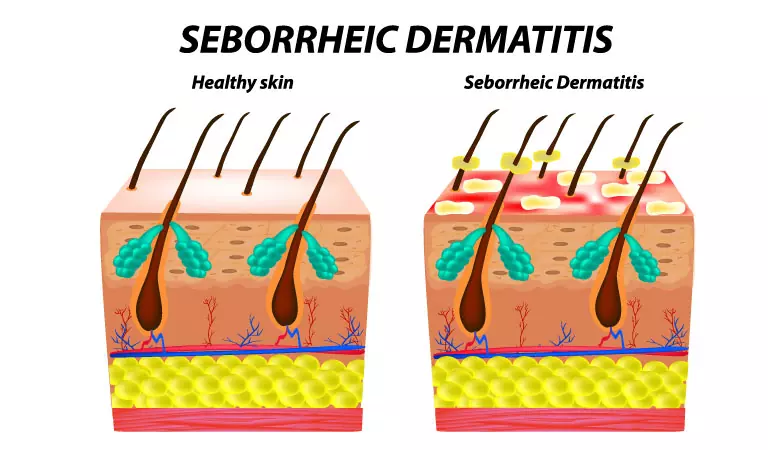
Also read: https://www.drbatras.com/hair-conditions/seborrhoeic-dermatitis/faqs
Tips for Managing Seborrhoeic Dermatitis
- Seborrhoeic dermatitis often presents flakiness which people assume to be dry skin. The source of the problem is more likely a combination of yeast and oil which are required to be removed from the skin. Resist the urge to over-moisturize with oils and creams. A light moisturizer is recommended.
- Don’t pick the flakes! Constantly picking flakes causes more irritation (which likely results in excess oil production and makes the condition even worse).
- Allow the hair to dry before putting it up in a ponytail or braid. Piling wet hair on top of your head will cause a moisture trap.
- Keep the affected areas clean by washing with soap and water daily.
- Sunlight is another preventative, which can slow the growth of the yeast organisms living in the affected areas of the body. Thus, being outdoors and outdoor exercise can help in making the skin rash disappear.
Most patients with seborrhoeic dermatitis can be treated well in the primary care setting. However, when doubts arise with other clinical features that might indicate another disease (e.g. rosacea, psoriasis or systemic lupus erythematosus) or if there is no sufficient response to treatment, the patients should be referred to a dermatologist for evaluation and treatment.
Homeopathy Treatment for Seborrhoeic Dermatitis
Homeopathy is a system of treatment that is free of side-effects, does not interact with regular medications and is widely applicable in many fields of medicine, including dermatology. To start with, homeopathic medicines reduce the frequency and intensity of flare-ups of seborrhoeic dermatitis. In time, the condition is treated. Also, homeopathic medicines boost the self-healing mechanism of the body, thus making it strong enough to fight seborrhoeic dermatitis on its own.
Homeopathy offers a substantial treatment for seborrhoeic dermatitis during all stages. The different homeopathic medicines used to treat seborrhoeic dermatitis are kali sulphuricum, thuja occidentalis, natrum muriaticum and more. These medicines treat both chronic and acute seborrhoeic dermatitis effectively.
A study published in the World Journal of Pharmaceutical and Medical Research proves that homeopathic oral preparation containing potassium bromide, nickel sulfate and sodium chloride has provided an 89% success rate for the treatment of seborrhoeic dermatitis.
AtDr Batra’s™, we offer you the best treatment options forseborrhoeic dermatitis. We offer a tailor-made solution to each patient. Our doctors determine the root cause of seborrhoeic dermatitis and then provide proper medication that stimulates and restores your vital energy to heal. Book an appointment with us to get a safe, effective and holistic homeopathy treatment for seborrhoeic dermatitis.
